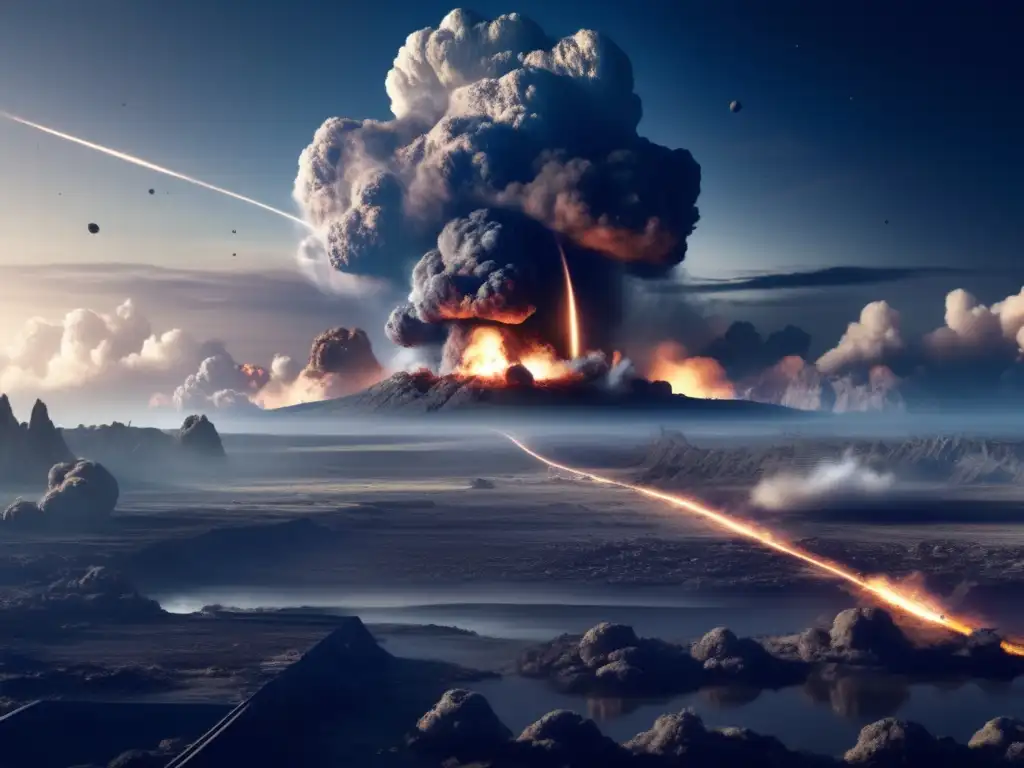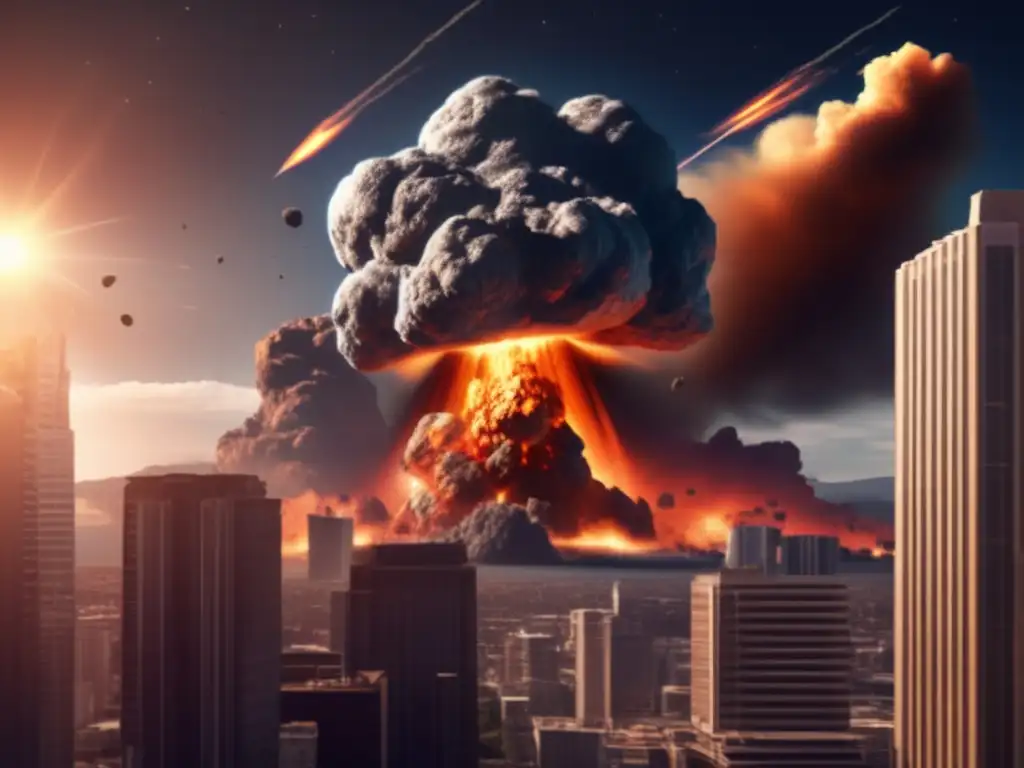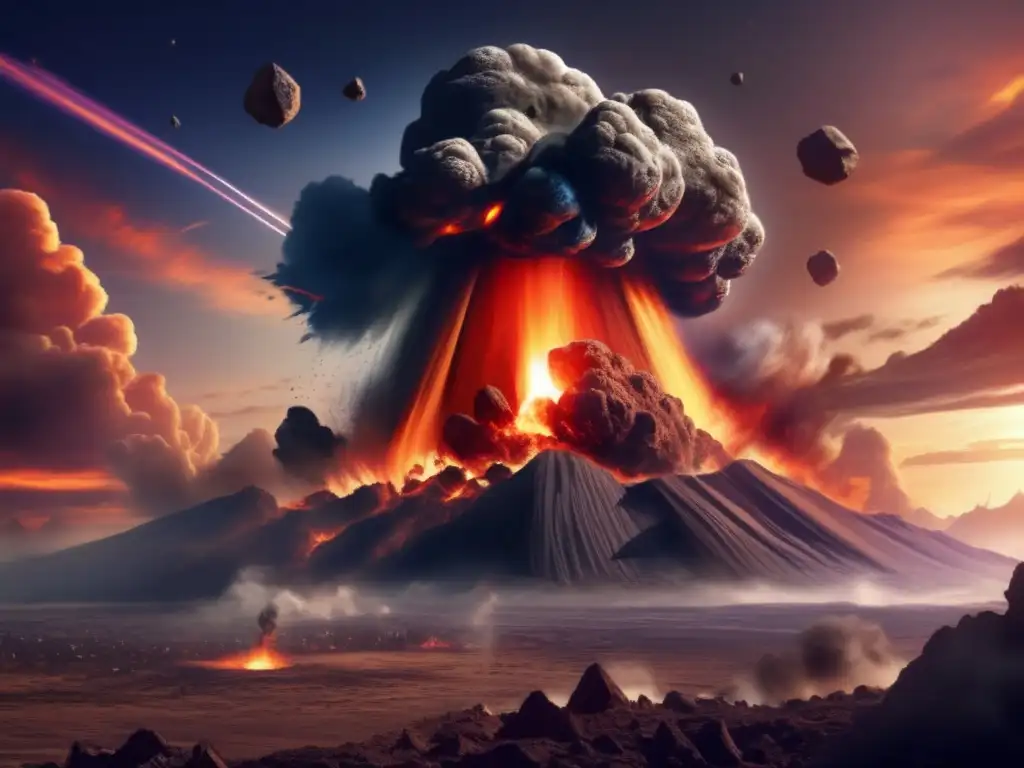The Asteroid Theory: Decoding The Mass Extinction Event

Introduction
The mass extinction event that wiped out the dinosaurs and many other species on Earth has been a topic of intense research in recent years. While several hypotheses have been proposed to explain this catastrophic event, the asteroid theory has emerged as the most credible explanation for the mass extinction. The asteroid theory suggests that a massive asteroid impact was responsible for the extinction of the dinosaurs and the end of the Cretaceous period, around 66 million years ago.
The Impact Event

What is an impact event?
An impact event occurs when a celestial object, typically an asteroid or comet, collides with a planet. Such impacts can cause significant damage to the planet's surface, leading to catastrophic events such as tsunamis, earthquakes, wildfires, and global climate change. Impact events have been known to occur on Earth throughout its history, with the best-known example being the mass extinction event of the dinosaurs.
How did the asteroid impact cause the mass extinction?
The asteroid impact caused a massive explosion with a force equivalent to hundreds of millions of nuclear bombs. The impact released immense amounts of energy, vaporizing the asteroid and causing a fireball that engulfed the surrounding area. The heat generated by this event ignited widespread wildfires, while the dust and debris ejected into the atmosphere blocked out sunlight, leading to long-term cooling and decreased photosynthesis. The sudden and drastic changes in temperature disrupted global ecosystems, making survival difficult for many species.
How do we know the asteroid impact caused the mass extinction?
Evidence from various sources supports the asteroid theory, including the discovery of a massive impact crater in the Yucatán Peninsula in Mexico, which is widely believed to be the site of the asteroid impact. The crater's age has been determined to be around 66 million years old, consistent with the end of the Cretaceous era and the mass extinction event. In addition, a layer of sedimentary rock known as the K-Pg boundary, found all over the world, contains high levels of iridium, a rare element that is common in asteroids but very rare on Earth. This suggests that an asteroid impact was responsible for the mass extinction.
The Aftermath

What were the immediate effects of the impact event?
The immediate aftermath of the impact was characterized by massive earthquakes, tsunamis, wildfires, and global darkness caused by the dust and debris ejected into the atmosphere. The impact also caused intense heat, which vaporized the asteroid and caused a massive fireball. The heat generated from this event ignited widespread wildfires, which may have burned for years. The explosion also sent shock waves through the Earth's crust, causing massive earthquakes and tsunamis that devastated coastal areas.
How did the impact event affect the global climate?
The dust and debris ejected into the atmosphere by the impact blocked out sunlight, leading to long-term cooling and decreased photosynthesis. This sudden and drastic change in temperature disrupted global ecosystems, making survival difficult for many species. In addition, the impact released large amounts of gases such as carbon dioxide and sulfur dioxide into the atmosphere, leading to acid rain and further exacerbating the environmental impact of the event.
Did any species survive the extinction event?
While the mass extinction event was catastrophic, some species managed to survive, including small mammals, birds, reptiles, and amphibians. These species were able to adapt to the rapidly changing environment, taking advantage of the ecological niches left vacant by the extinction of larger species.
Frequently Asked Questions

-
How big was the asteroid that caused the mass extinction?
The asteroid that caused the mass extinction was estimated to be around 10-15 kilometers in diameter.
-
What effects did the asteroid impact have on the global ecosystem?
The impact caused widespread destruction of ecosystems, leading to the extinction of many species and making survival difficult for others.
-
What is the K-Pg boundary?
The K-Pg boundary is a layer of sedimentary rock found all over the world that contains high levels of iridium, suggesting that an asteroid impact was responsible for the mass extinction event.
-
What happened to the dinosaurs after the impact event?
The impact event caused the extinction of the non-avian dinosaurs, while the avian dinosaurs survived and evolved into modern birds.
-
Could an asteroid impact happen again?
Yes, asteroid impacts remain a potential threat to Earth, although the probability of a catastrophic impact is relatively low.
Conclusion
The asteroid theory remains the most widely accepted explanation for the mass extinction event that wiped out the dinosaurs and many other species on Earth. The evidence from various sources, including the discovery of the impact crater in Mexico and the presence of iridium in the K-Pg boundary layer, supports this hypothesis. While the impact event was catastrophic and had a profound impact on global ecosystems, some species managed to survive and adapt, leading to the evolution of modern biodiversity. Continued research on asteroid impacts and their effects on the Earth remains a critical area of study to understand the history and future of our planet.
We hope you found this article informative and thought-provoking. Please feel free to share your thoughts in the comments section below and interact with us positively by subscribing or sharing the article on social networks. Thank you for your time and attention.
Additional Resources

- NASA Asteroid Resource Page
- Smithsonian Magazine: The Day the Dinosaurs Died
- National Geographic: Asteroids & Comets
 Fire From The Sky: The Impact Winter And Dinosaur Extinction
Fire From The Sky: The Impact Winter And Dinosaur Extinction Cosmic Catastrophe: The Asteroid That Reshaped Life On Earth
Cosmic Catastrophe: The Asteroid That Reshaped Life On Earth A Blast From The Past: Asteroids And The Dinosaur Demise
A Blast From The Past: Asteroids And The Dinosaur DemiseIf you want to discover more articles similar to The Asteroid Theory: Decoding The Mass Extinction Event, you can visit the Asteroids and Dinosaurs category.
Leave a Reply

Articulos relacionados: